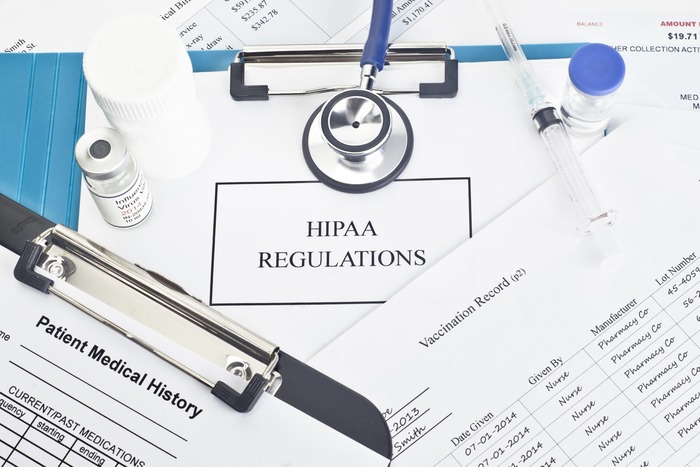The US federal legislation known as HIPAA, or the Health Insurance Portability and Accountability Act, safeguards patients’ medical and health information. Basic HIPAA criteria indicate that in order to deliver and promote high-quality healthcare and protect the health and welfare of the general public, medical and health data on individuals must be securely preserved while allowing for necessary information flow. Additionally, it imposes requirements on enterprises to establish both technological and non-technical security measures to safeguard patients’ electronic medical records.
Any company or organization entrusted with patient medical or health-related data must uphold HIPAA compliance. Simply ‘setting it and forgetting it’ when it comes to your compliance plan won’t suffice. Ongoing effort is imperative to ensure adherence. In this manual, we will elucidate some of our top recommendations for upholding HIPAA compliance, particularly focusing on the importance of meeting HIPAA compliant network requirements.
Keeping HIPAA Compliant: Success Strategies
Provide your staff with initial and ongoing HIPAA training.
Your teams must receive regular HIPAA training and policy attestation, which is a requirement. Education is the cornerstone of your compliance operations. Under the HIPAA privacy rule, administrative and physical measures are directly tied to employees.
Offering streamlined HIPAA compliance training enables businesses to more quickly implement the necessary controls. By increasing associate awareness and understanding, all businesses can be confident that they are taking all necessary precautions to protect Protected Health Information (PHI).
Regular training keeps HIPAA knowledge current and ensures that everyone will support the implementation of new laws. Establish frequent staff meetings to go over your company’s security, privacy, and breach reporting procedures. You might also consider administering tests to determine how well your training sessions worked. If you take the time to properly and frequently train your team, they will become more aware of the dos and don’ts linked to protecting PHI.
Regularly perform HIPAA assessments
Organizations that must comply with HIPAA regulations may find assessments and audits to be of great assistance. Risk assessments are not only helpful but they should also be viewed as essential in order to create and maintain HIPAA compliance for covered organizations and their business links.
The HIPAA Security Rule mandates that organizations detect any potential threats to PHI. It is essential that healthcare organizations conduct thorough risk analyses that take into account the administrative, physical, and evaluation requirements of HIPAA.
In fact, it might be a smart idea to use a third-party auditing team of compliance experts and IT specialists who have the knowledge and resources to spot a company’s security vulnerabilities and network weaknesses that hackers could take advantage of.
Regular risk analyses and audits should be carried out. Accountable HQ and other companies can be useful in automating these audits and assessments so that you can spend less time and money conducting routine testing.
Create a Robust Compliance Management Program Right Away
Create and maintain an assertive management program within your firm to stay up to date with HIPAA rules. Sensitive data is continuously in danger due to emerging security vulnerabilities in the digital age. Your business will maintain continuous HIPAA compliance if you implement and enforce a strong program.
With the right resources, dangers may be controlled and dealt with when they occur. Your plan involves more than just identifying risks. It instead places a focus on preventative actions to safeguard data integrity and confidentiality throughout time.
Your data management program should also include an incident response plan. As we previously mentioned, the process of creating an incident response plan begins with a risk analysis. Finding security strengths and weaknesses entails a physical assessment.
You cannot be HIPAA compliant without one. The analysis aims to assess the organization’s capacity for safeguarding health information against threats, vulnerabilities, and dangers. The second step is to put together a breach response team that will represent your business in the case of a disaster. When you’re finished, be careful to check that your plan is accurate.
Always demand formal contracts from your suppliers and vendors
Contracts with “business associates” must be made in conformity with HIPAA by covered companies. These arrangements are known as business associate agreements. A business associate is any individual or company that creates, acquires, or retains PHI on behalf of the covered entity.
This includes any backup service provider. Some suppliers will enter into a Business Associate Contract with covered businesses as part of their strategy to support HIPAA compliance and abide by the HIPAA Breach Notification Rule. If your vendors do not provide such compliance capabilities for any reason, you should construct your own contract with them and make sure that they accept the terms of the agreement.
Recognize How COVID-19 Will Affect HIPAA Over Time
Because of the COVID-19 outbreak, healthcare will never be the same, and HIPAA compliance will also alter. Because of this, taking COVID-19 into account in your company’s potentially affected compliance, physical security, and cybersecurity components is a key item on your HIPAA compliance checklist.
The bulk of healthcare professionals and insured firms must regard remote work and telemedicine as their primary considerations. PHI about patients is managed in more locations, frequently on individual devices in homes. In order to account for this, the HHS decided to temporarily cease HIPAA-related fines and penalties.
In the work-from-home, telehealth-centric era, additional security measures for PHI handling must be adopted because the change may or may not be permanent. You must clearly identify and control device ownership in order to make it clear who is in charge of which categories of PHI. The HHS recently released guidelines for how healthcare organizations should manage vaccination status as PHI in 2022 and beyond.
The most recent notification provides extensive information on when, where, and to whom a patient’s vaccination PHI may be disclosed. Your compliance plan should contain the appropriate procedures, and your HIPAA compliance team should ensure that staff only discloses vaccination status in ways that are HIPAA-compliant.
Recognize HIPAA Violations’ Ever-Changing World for Ongoing Compliance
To take precautions, you must have a thorough understanding of what a HIPAA breach is and how it occurs. HIPAA infractions can occur in a number of different ways. Instead of data breaches or outside hackers, internal infractions are the most common type of offense. The majority of privacy rule violations are brought on by negligence or a lack of training.
Data breaches are an example of a common HIPAA violation. An external hack is not a need for a data leak. According to HIPAA, a data breach is any unauthorized access to PHI by people or organizations. In order to prevent data breaches, you’ll need a strong cybersecurity program, suitable internal security measures, and training.
To guarantee that your plan can be updated with defenses against new sorts of breaches, keep an eye on trending types of breaches and data breaches in the press.


